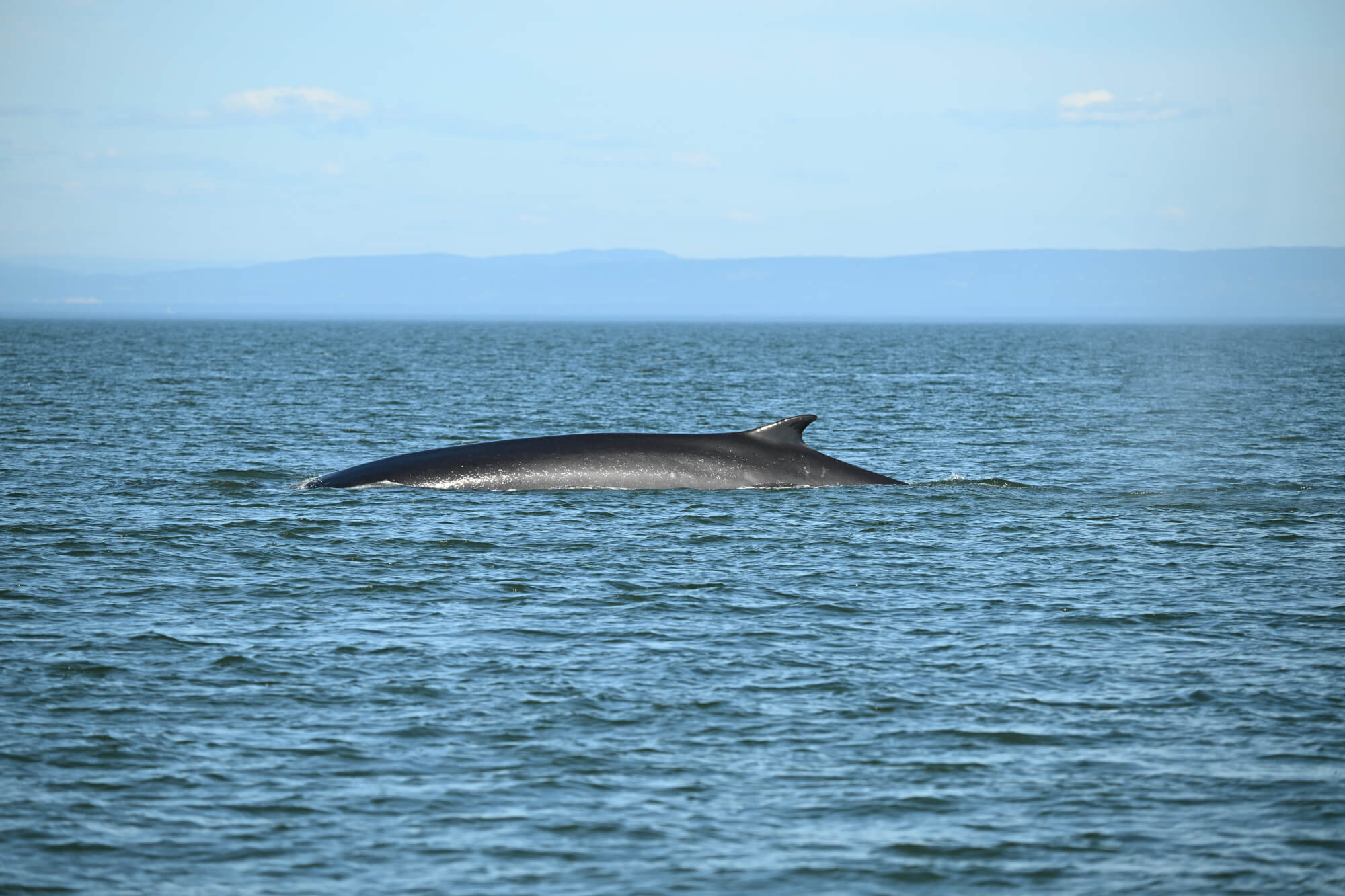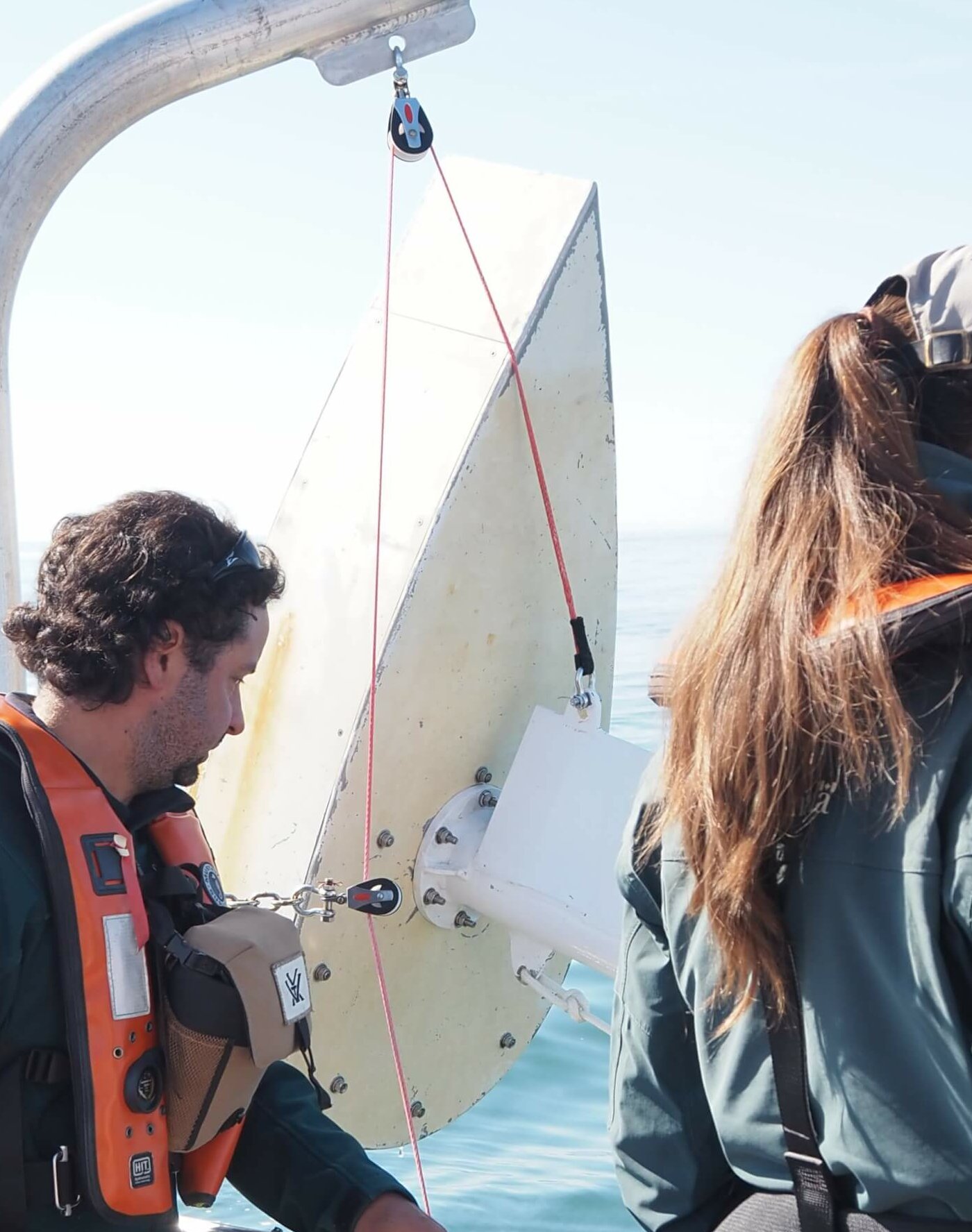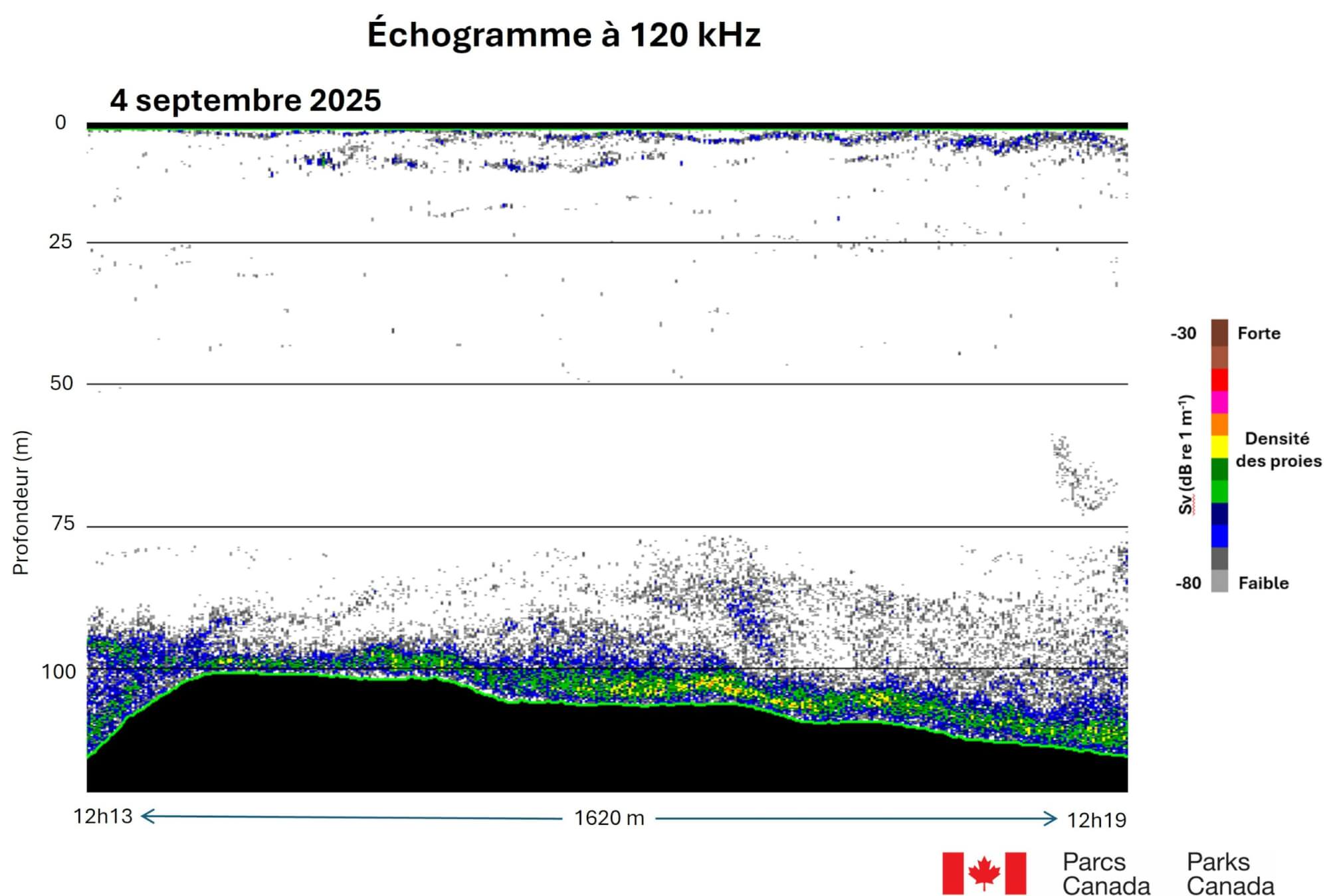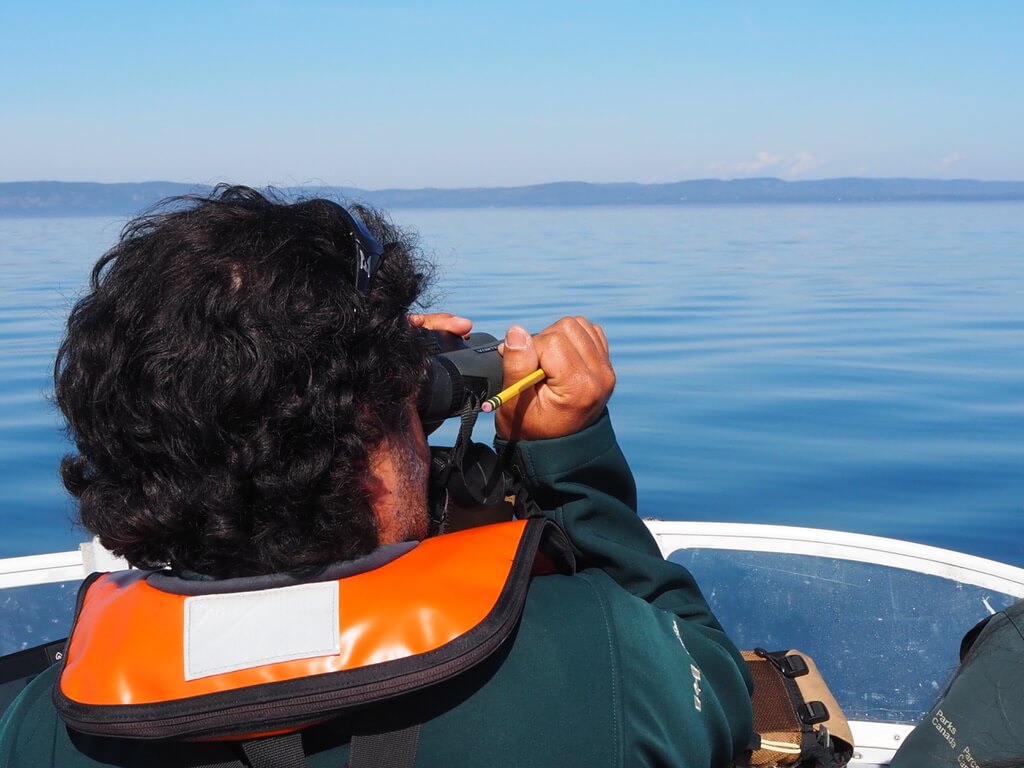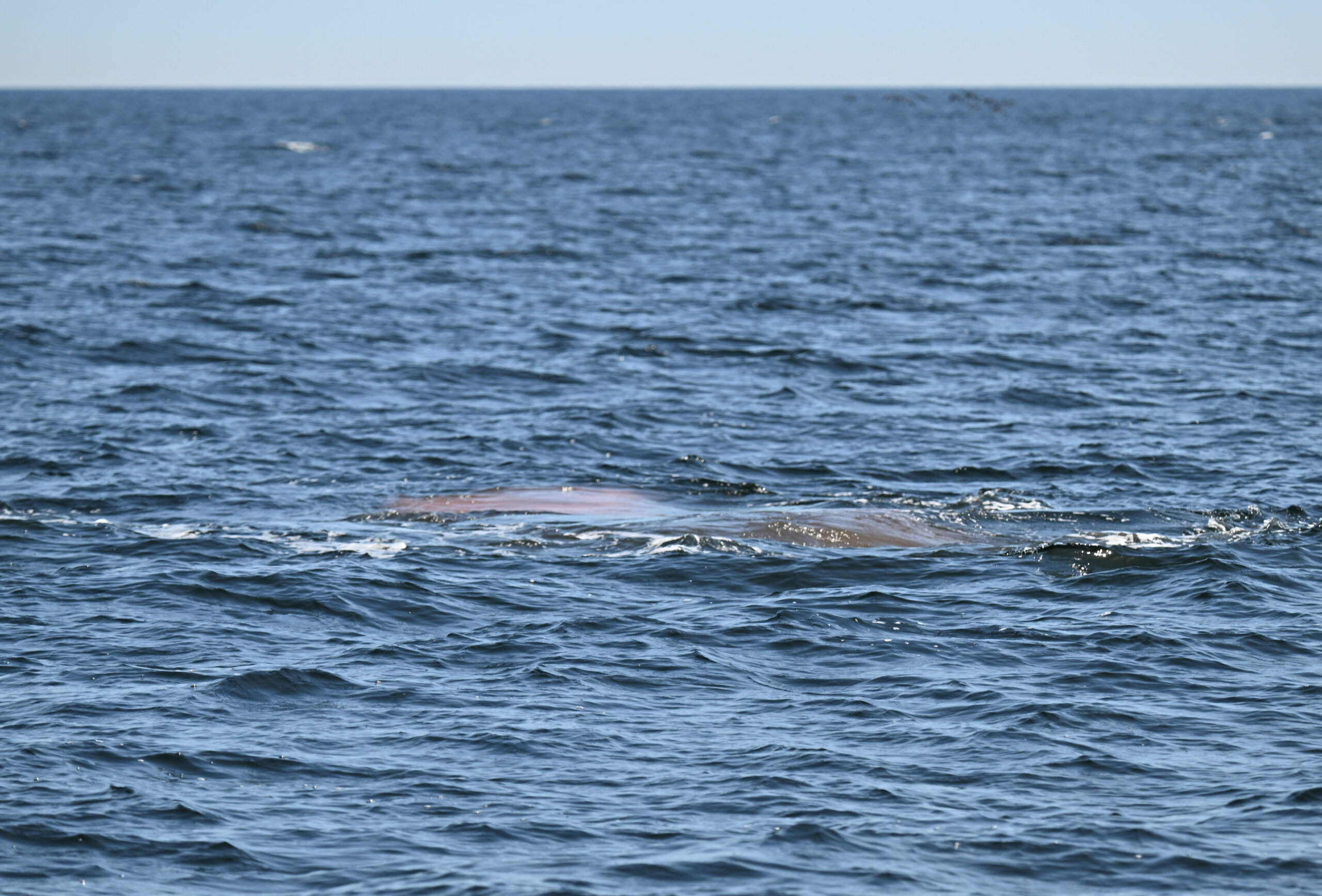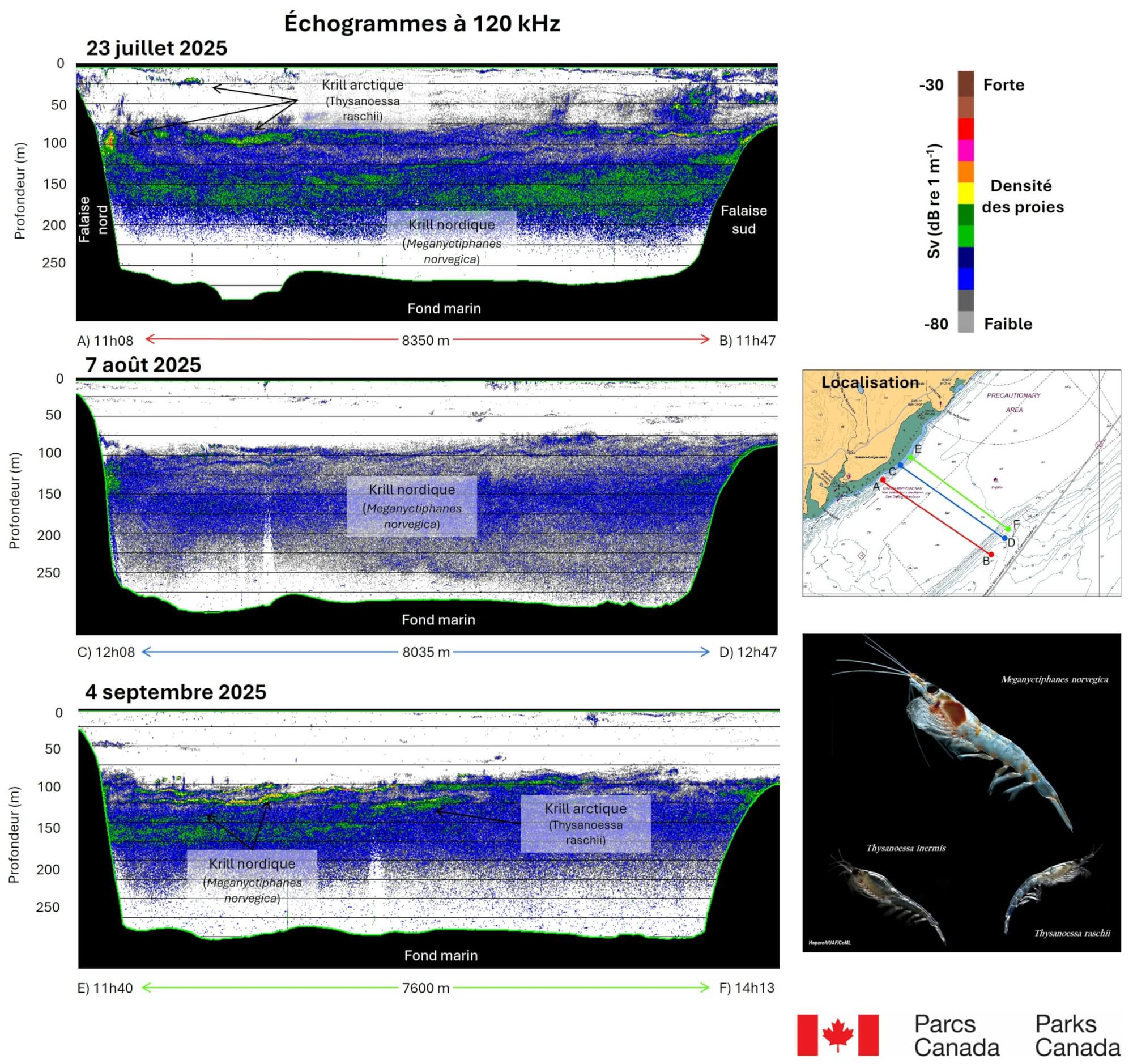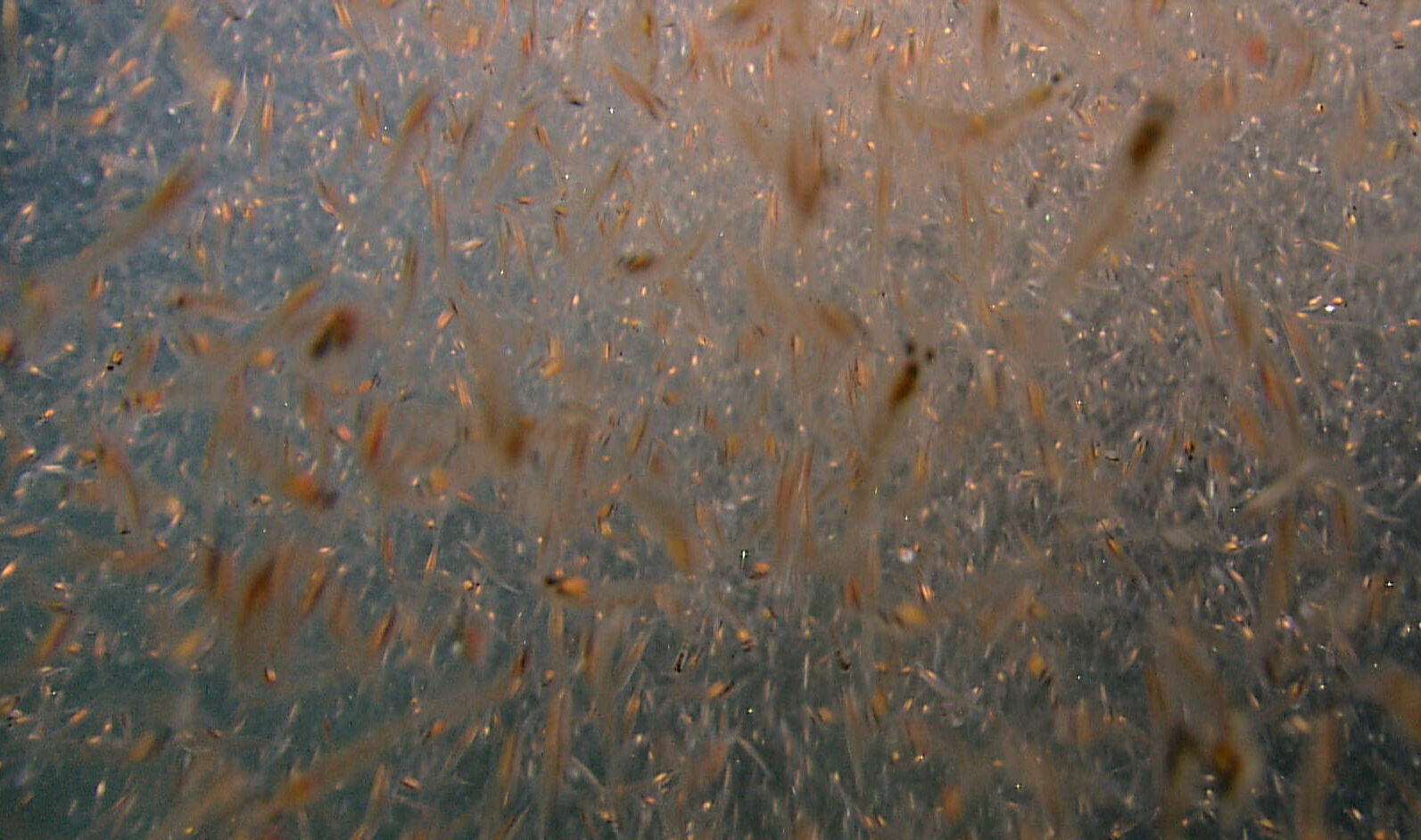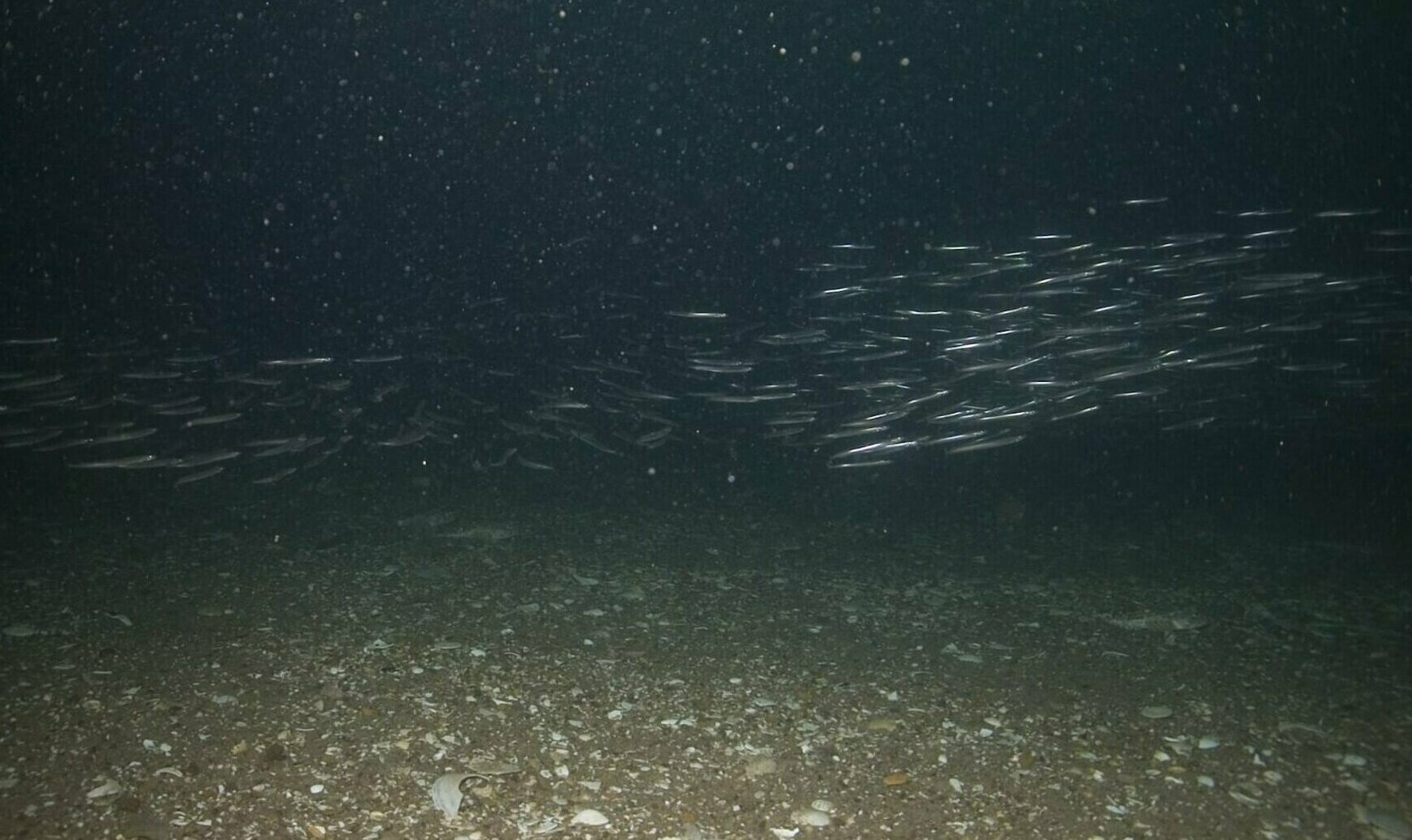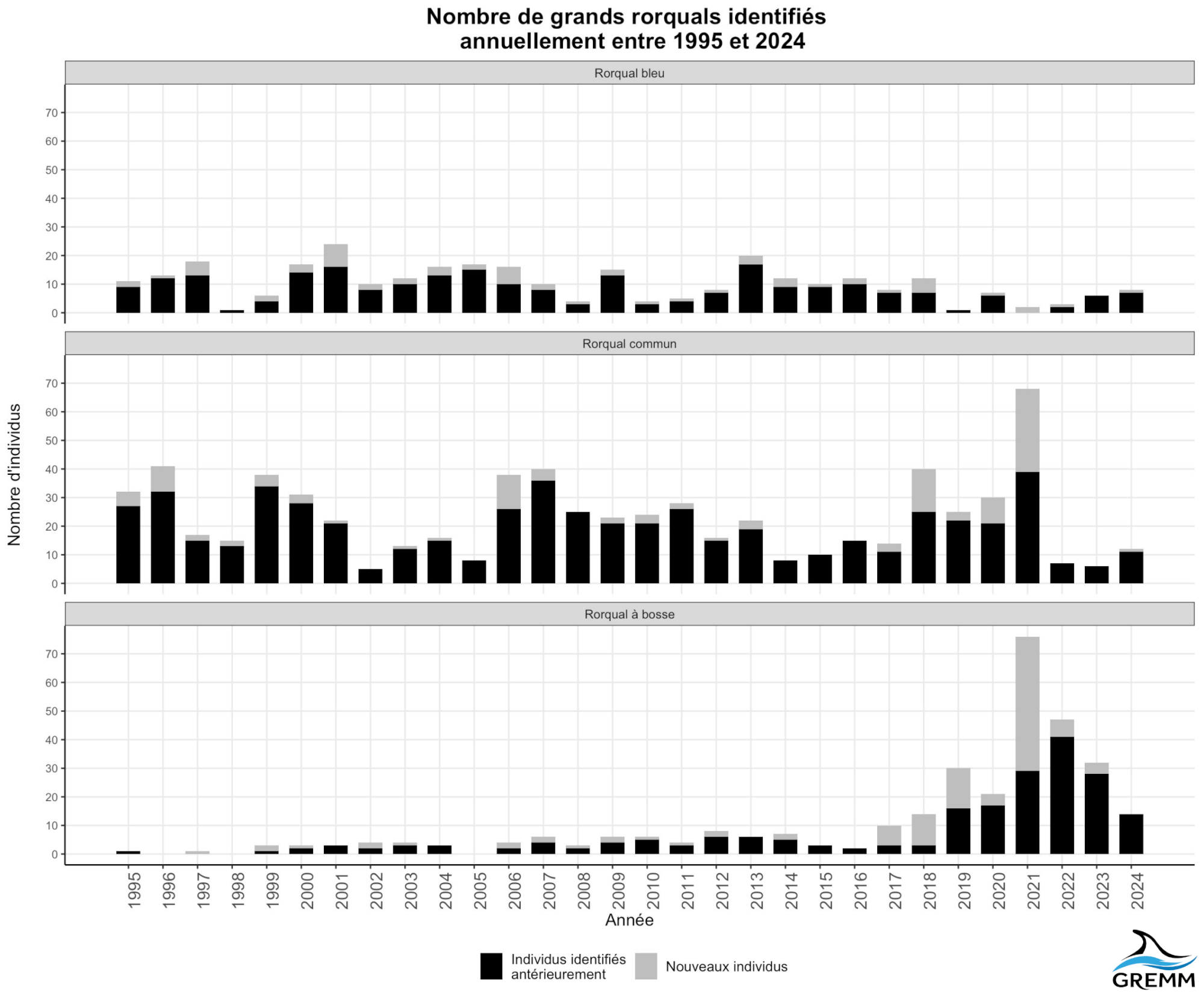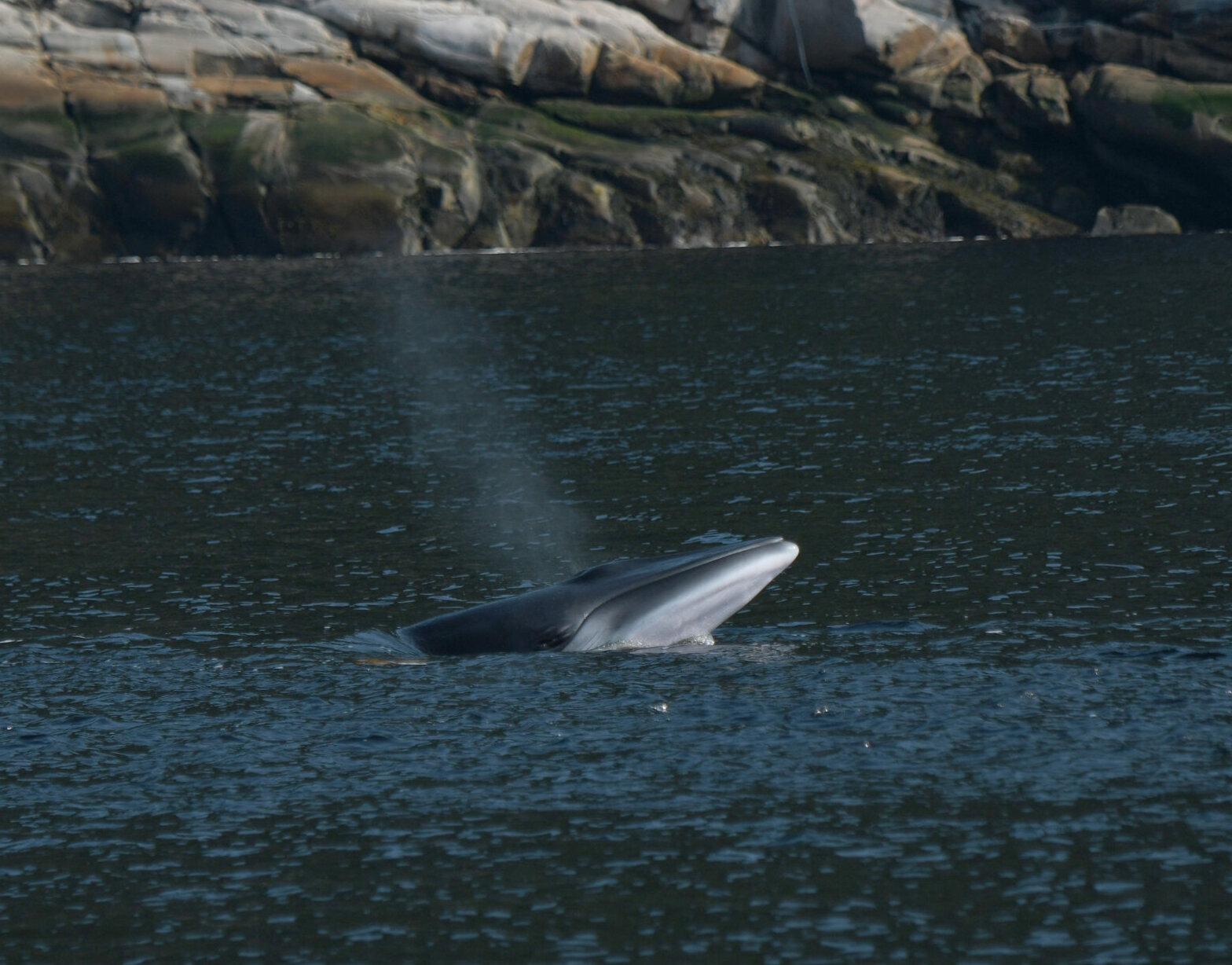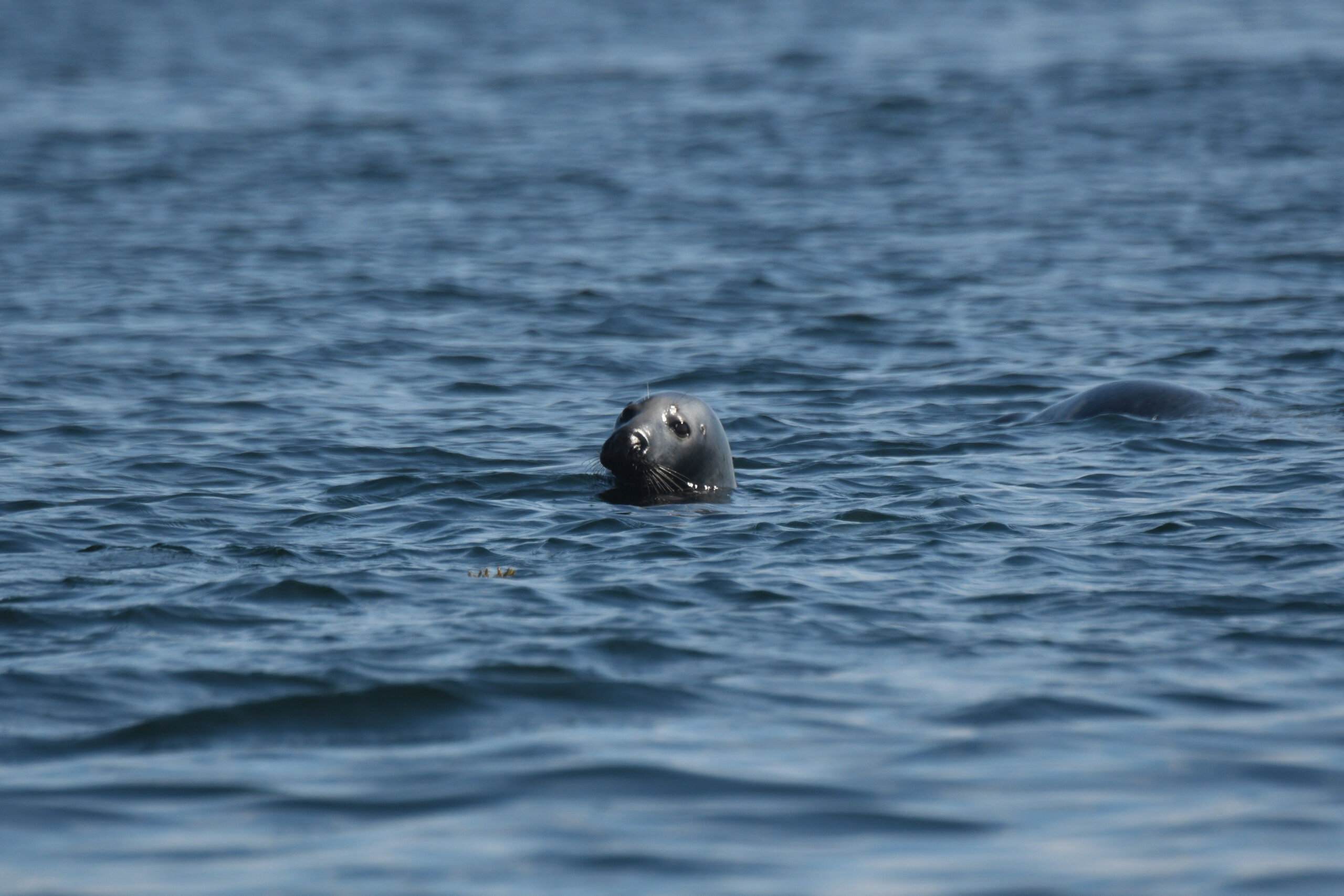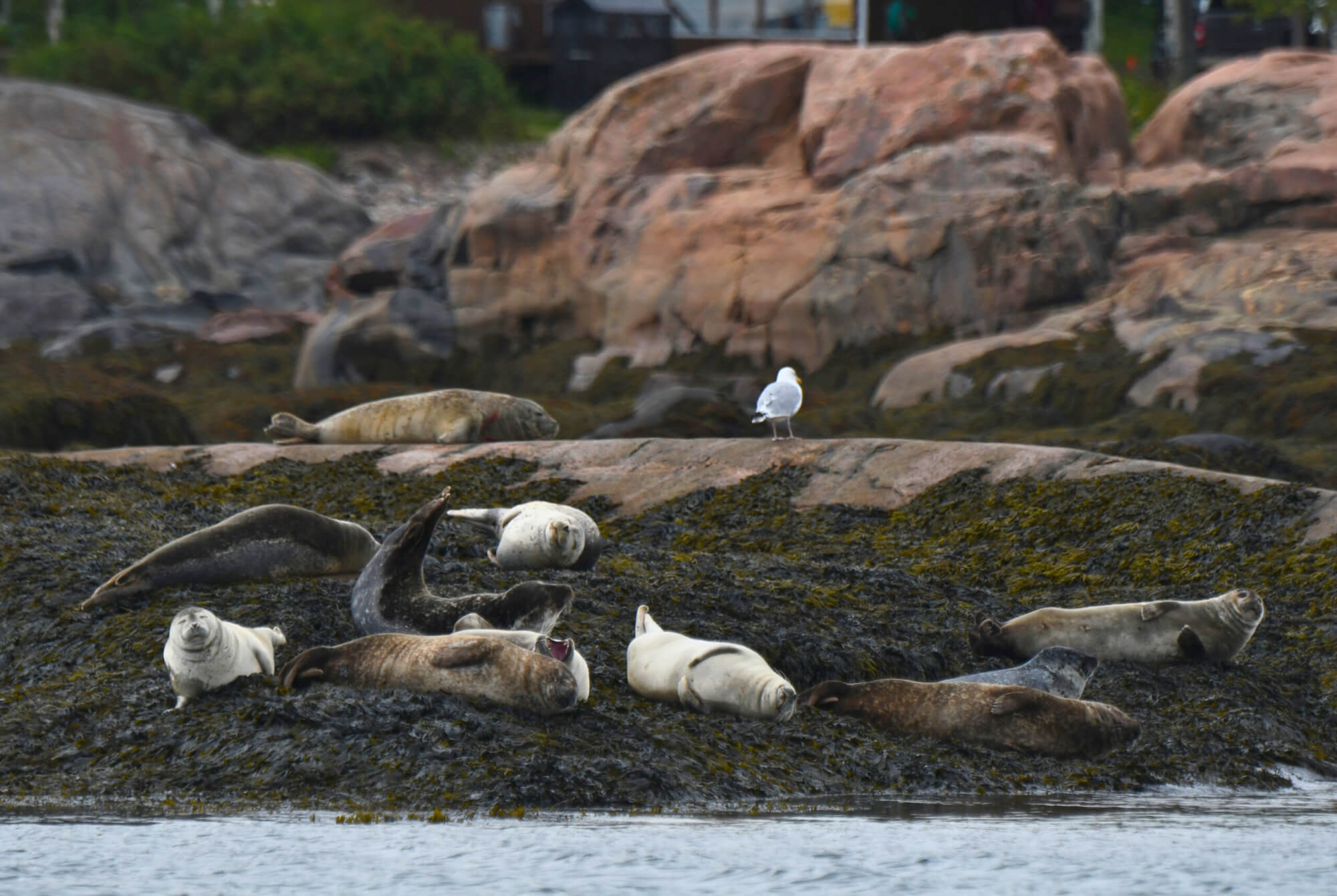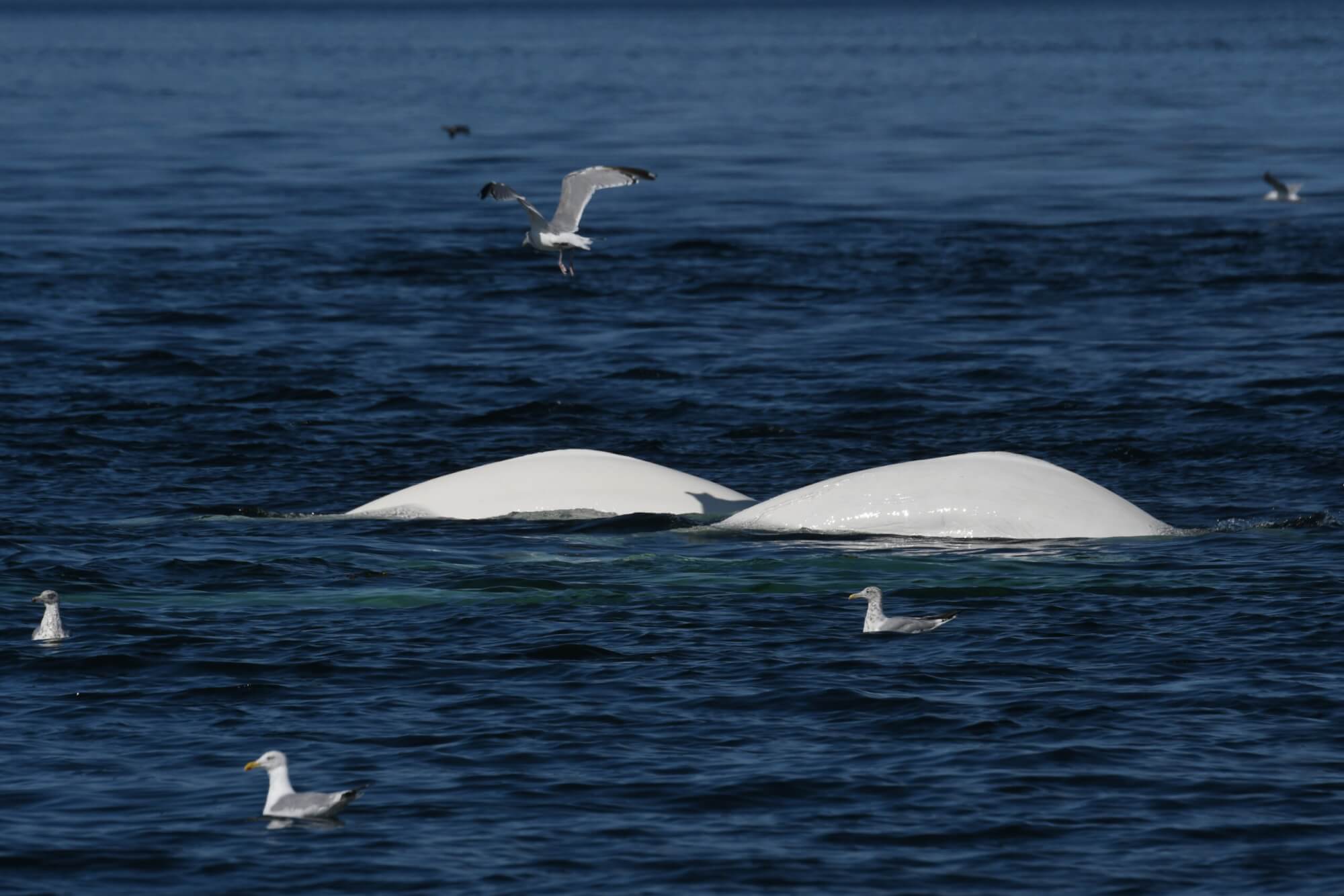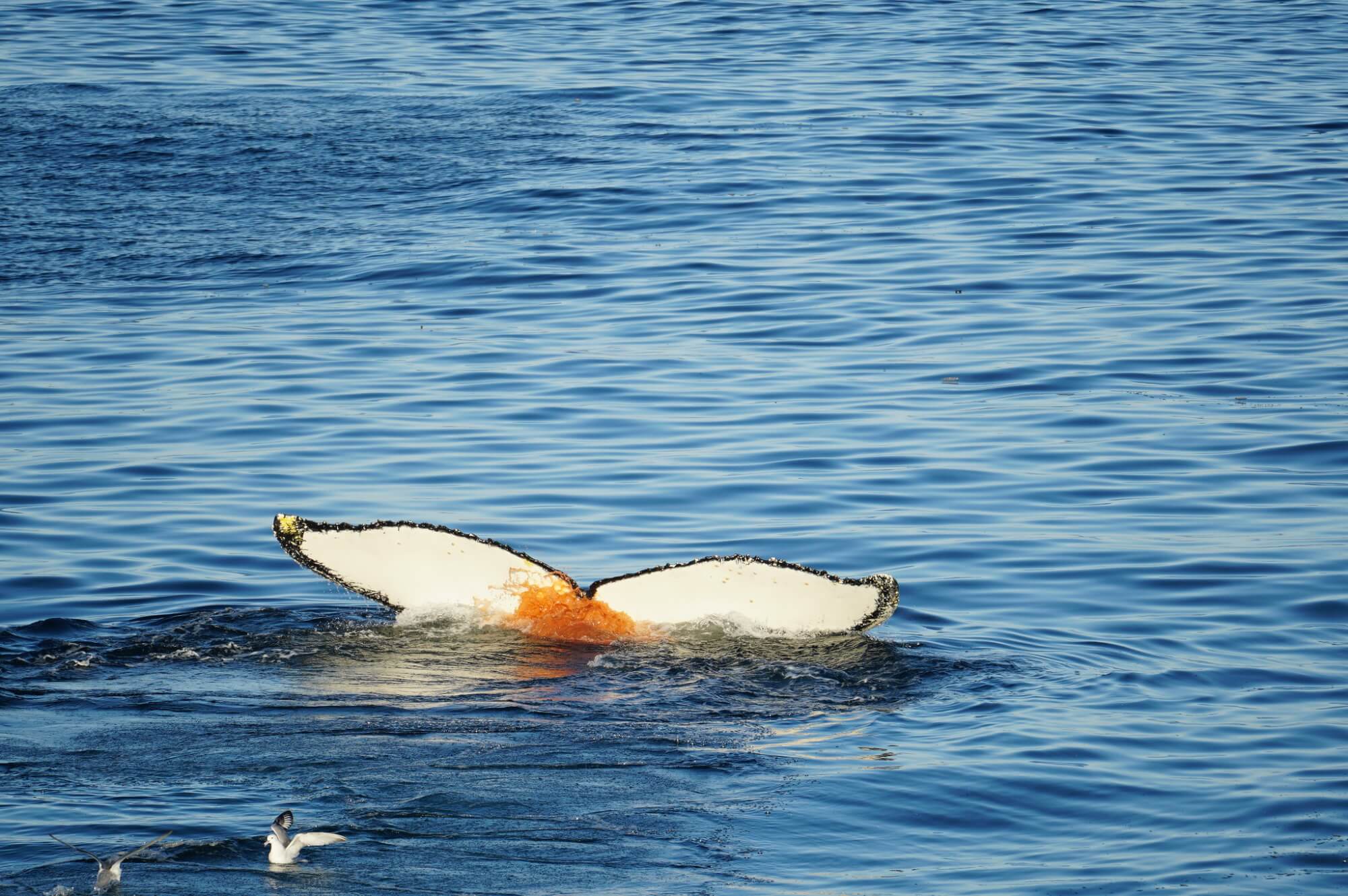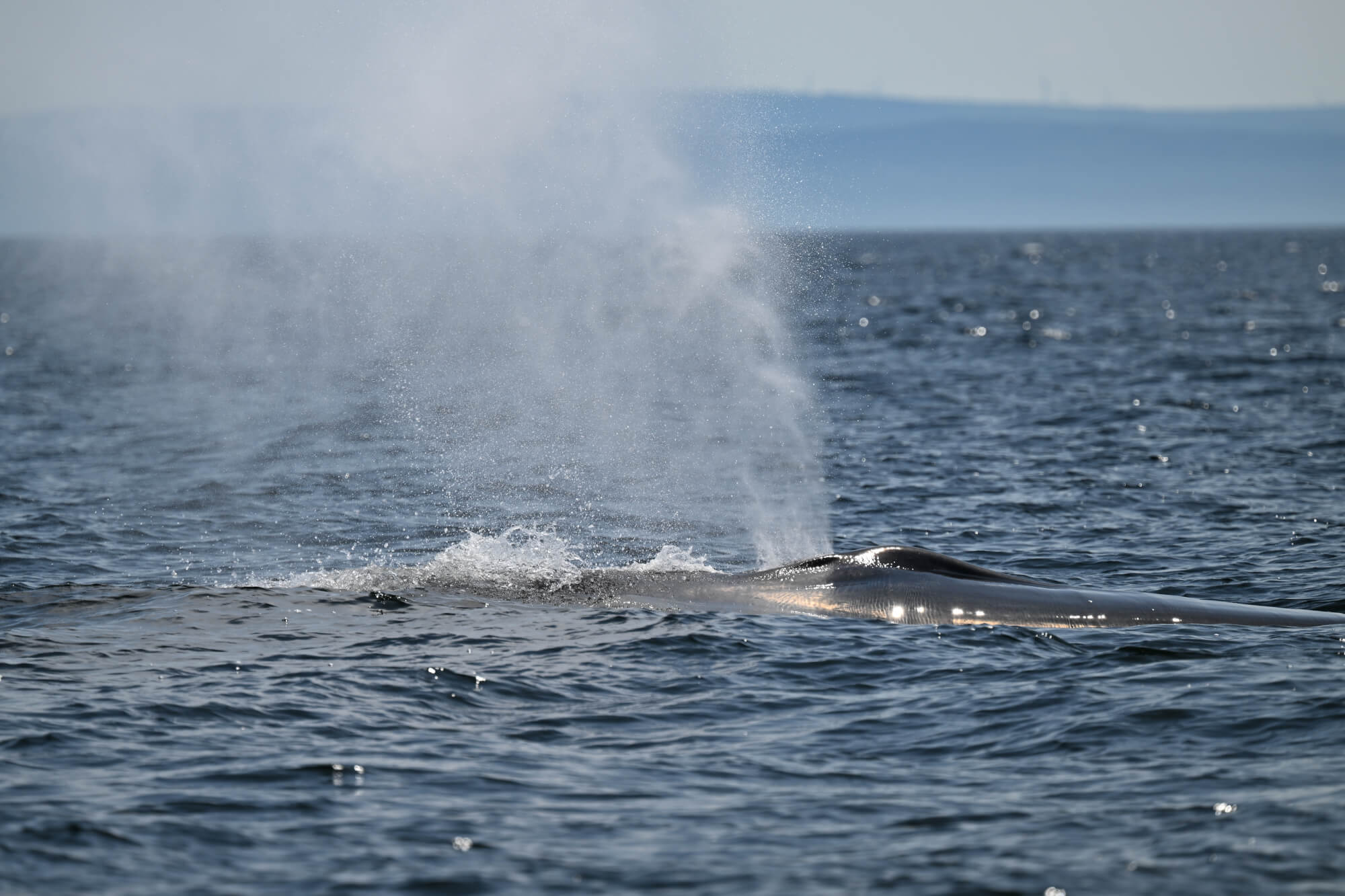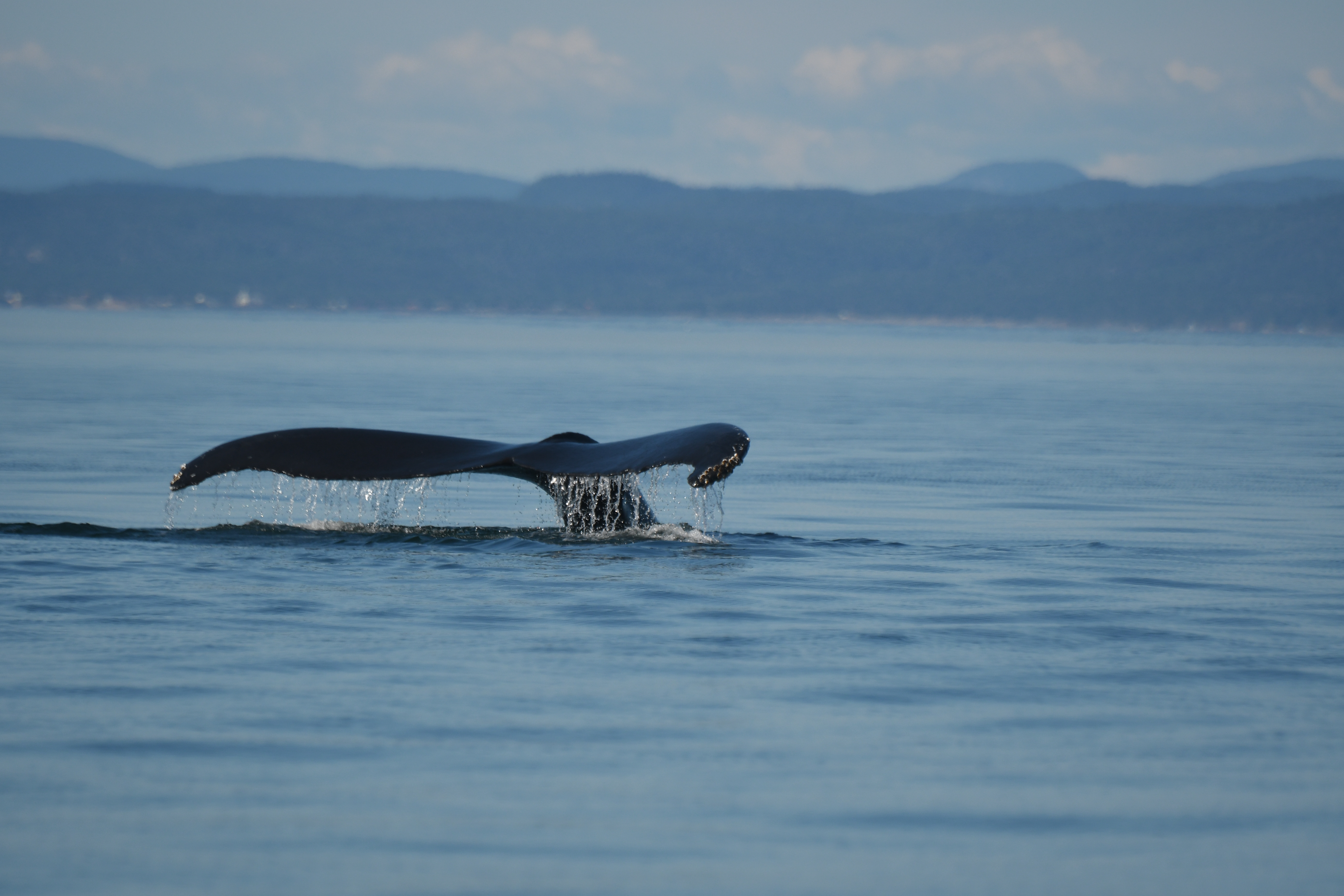Between mid-June and mid-September, as part of its annual large rorqual census in the Saguenay–St. Lawrence Marine Park, GREMM’s Large Rorqual Project team tallied 6 humpbacks, 13 fin whales, and 9 blue whales. In the first part of this report, the Whales Online team met with the head of this project to look at how these figures compare with those of previous years. Our investigation reveals that, in terms of numbers, this year’s situation is not exceptional. The results of these surveys, conducted every summer since 1985, nevertheless show significant and sometimes extreme interannual variations!
To continue our study, we boarded L’Alliance and met with Samuel Turgeon, a Parks Canada ecologist and head of the agency’s pelagic prey and predator monitoring, to learn more about the root causes of these fluctuations. At this point in the 2025 season, Parks Canada surveys indicate that while krill are present in the Marine Park this summer, schools of small fish are still nowhere to be found!
September 4, 2025: A day aboard L’Alliance to survey large rorqual prey
With little wind and calm waters, it looks like it will be a beautiful day. We board L’Alliance, a Parks Canada boat, and cast off at 8:20 a.m. Three resource management officers are on board to monitor pelagic prey and predators.
Every week from early June to mid-October, the team conducts five random transects (lines that cross the Laurentian Channel perpendicular to the coast) in the Lower Estuary portion of the Marine Park. For each transect, the crew deploys the echo sounder, a device designed to gather information on what lies below the surface. Their goal: to determine whether prey (whether those of whales or birds) are present or not.
Using a principle similar to echolocation in cetaceans, the echo sounder emits three pulses, each with a different frequency (38, 120, and 200 kHz). These sound waves then reflect off whatever lies in their path, providing insight into the type and quantity of prey at different depths.
Each species has its own unique acoustic signature. Krill, for example, have a weaker echo below 38 kHz than at 120 kHz, unlike fish, which show a relatively similar echo at these two frequencies, or even a stronger one at 38 kHz. Scientists are therefore able to differentiate krill from schools of fish, and even, when they use the highest frequency (200 kHz), identify certain species of fish and krill.
The St. Lawrence is home to three types of krill: Thysanoessa inermis, Thysanoessa raschii (Arctic krill), and Meganyctiphanes norvegica (northern krill). Under the methodology used by Parks Canada, the latter two species can be told apart. Arctic krill are regularly found closer to the surface, while northern krill favour deeper waters.
The data are displayed in real time right in front of us. At first glance, there is a low density of krill this week and no schools of fish.
While Sarah the captain follows the transect line and keeps one eye open for any vessels that might obstruct her route, two agents scan the waters and skies from the upper deck of the boat. Throughout the trip, the team tallies 80 grey seals, 1 harbour seal, 8 harbour porpoises, 27 belugas, and 1 fin whale.
Prey as whale magnets
The St. Lawrence is an important source of food for several species of migratory whales, which come to feed in its waters during the summer.
Humpback whales generally feed on small fish such as herring and capelin, but also on krill. Fin whales are believed to have become more generalist than they once were due to changes in their environment, though some individuals continue to show a preference for krill, herring, and capelin, according to a Fisheries and Oceans Canada study published in 2021. Blue whales, on the other hand, are krill fanatics. Therefore, depending on what they find along their journey, some will make it as far as the Marine Park while others won’t. Of those that do make it this far, some may turn back if their favourite prey is not found in sufficient quantities.
It is important to view the presence of large rorquals in the Marine Park through the lens of food abundance in the St. Lawrence. If an area has a high abundance of prey, it is likely that individuals have made pit stops there. For example, large rorquals have frequently been observed in recent weeks in the vicinity of Portneuf-sur-Mer (off Pointe à Boisvert) or Matane, likely due to high concentrations of food in these parts. Observers also report a constant presence of whales in the gulf, whereas in the estuary, few minke whales and groups of seals appear to be present.
What this monitoring tells us
Conducted every summer since 2009, Parks Canada’s monitoring efforts systematically document the physical and chemical conditions of the water column, the number of predator species present, the number of individuals, and the presence and abundance of their prey. By combining all these variables, the team is able to obtain a simultaneous overview of the distribution and abundance of both predators and their prey. This project, which closely overlaps in scope GREMM’s large whale census, is a powerful tool for tracking and understanding the changes taking place in the Marine Park. This monitoring is also part of Parks Canada’s Ecological Sustainability Monitoring Program, which aims to determine the health of the Marine Park’s ecosystems.
What about 2025?
Samuel Turgeon, an ecologist at Parks Canada, reports that “According to preliminary analysis of the data collected so far this summer, no large schools of pelagic fish have been detected. […] However, there has been a constant presence of krill since the start of the season.” Interestingly, “On August 7, 2025, fewer krill were detected during monitoring, particularly Arctic krill, which is consistent with the departure of a few large rorquals in the preceding days,” adds Samuel. Indeed, from August 6 to 17, no large rorquals were reportedly observed in the Marine Park.
Abundance trends
Since 2022, Parks Canada has recorded a significant abundance of krill in the Marine Park. Small fish, while not entirely absent from the data, have been less present during each of the past four summers, explains Samuel Turgeon, whereas the opposite was true from 2018 to 2021, when there was a constant presence of fish (believed to be mainly sand lance) in the traditional feeding grounds used by large rorquals. Indeed, these areas, such as Cap Granite or the south cliff, appear to have been less used since 2022, unlike in previous years.
Some fish species appear to be undergoing abundance cycles within their populations. This phenomenon might be having an impact on the presence of rorquals that feed on these prey. Future monitoring by Parks Canada, together with comprehensive winter analyses, may allow for more robust conclusions and a more detailed understanding of the relationships between predators and their prey.
Large rorqual counts in the Saguenay–St. Lawrence Marine Park area since 1995. © GREMM
An ecosystem in full flux
Significant changes appear to be unfolding in the St. Lawrence, affecting its denizens, from tiny krill to giant blue whales. In the course of its prey monitoring, Parks Canada also collects valuable data on the water column, which is subsequently analyzed by Fisheries and Oceans Canada. In recent years, scientists in the Lower Estuary sector of the Marine Park, have been observing a decrease in dissolved oxygen levels in the deep water layer, a thinning of the cold intermediate layer, and higher water temperatures in each of the three water layers. The same holds true for the entire St. Lawrence Estuary and the Gulf of St. Lawrence.
GREMM / Parks Canada monitoring of large rorquals and their prey in the Marine Park provides valuable data to better understand this constantly changing environment. The history and comprehensive nature of these surveys underscore the importance of long-term studies on predator-prey relationships to better understand and interpret the presence of large rorquals in the St. Lawrence and protect this area, which is so essential to marine life.
What about other species?
In each of these two reports, our team examined the presence of large rorquals and their prey in the Marine Park. However, since the beginning of the season, sightings (or the lack thereof) of other species have also raised questions. What’s happening with minke whales, which seem to be less plentiful along our coasts lately? Where are the large herds of grey seals that were observed in years past at the head of the Laurentian Channel? And what’s going on with belugas, which have been present this summer in large numbers in the northeastern gulf and on the Gaspé coast, areas that are more associated with the species’ winter range ? Lastly, are great white sharks about to start venturing into the Marine Park? In the weeks to come, we will attempt to explore some of these questions…


